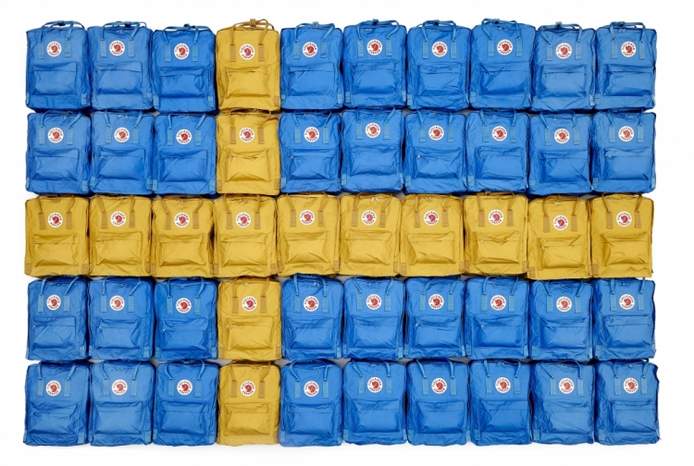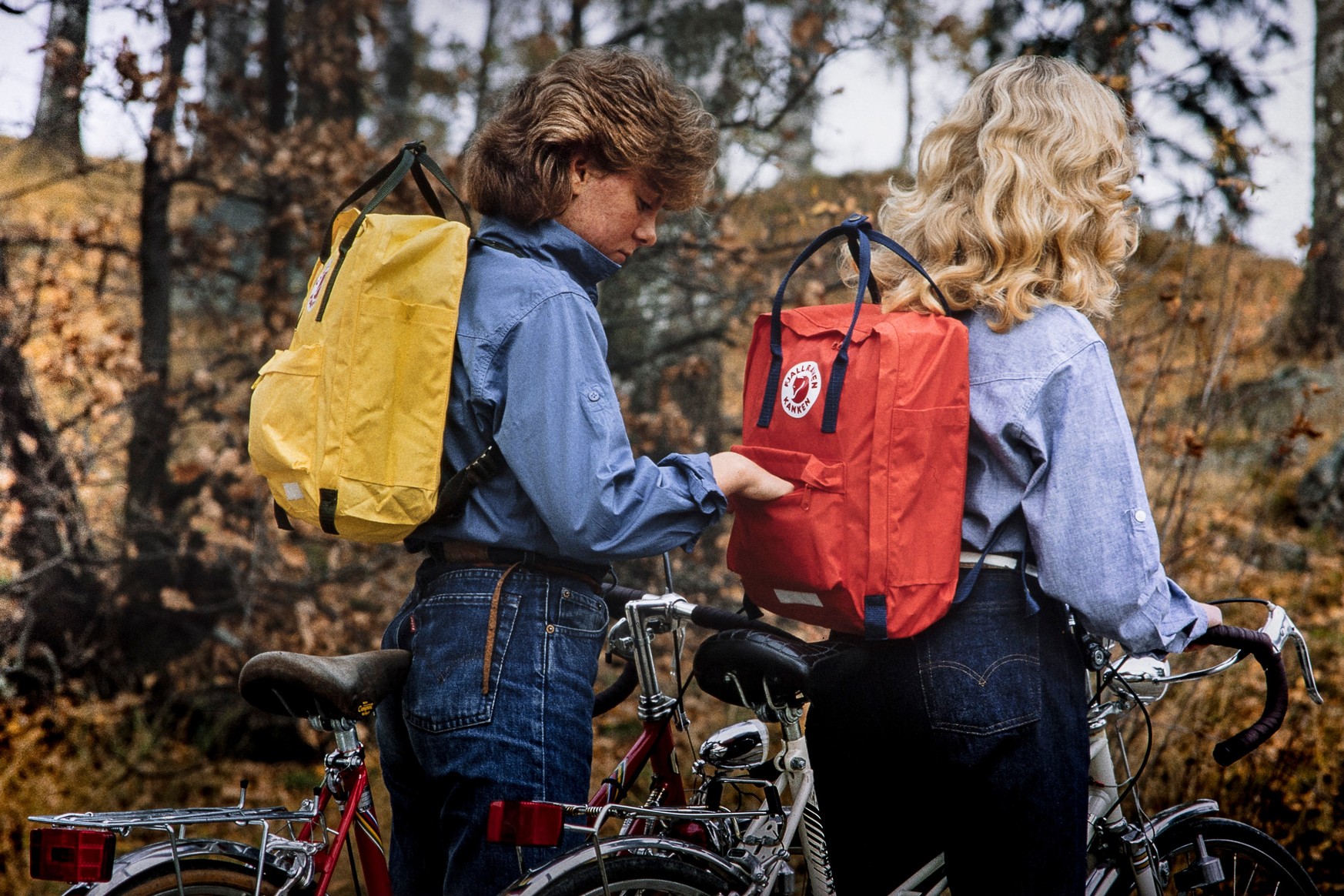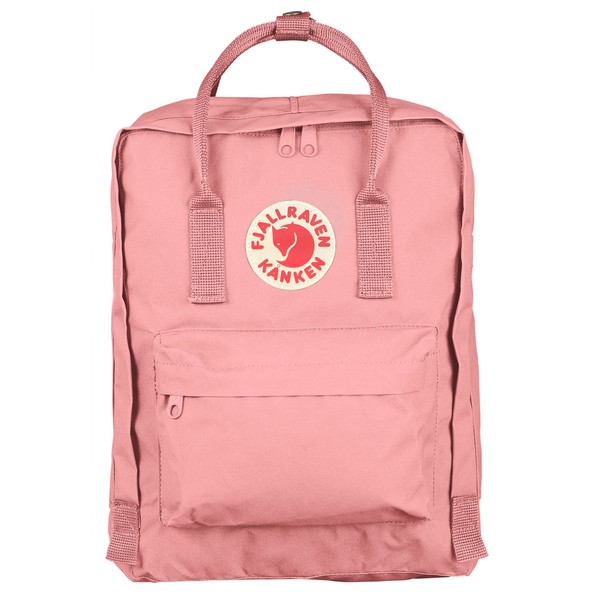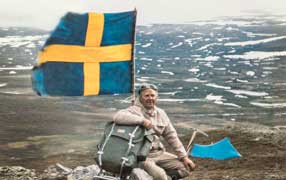Breadcrumbs navigation
Kånken story

Of all Fjällräven products, the simple and durable Kånken backpack has done most to propel the company to global brand status. It is found everywhere, almost worldwide – from city streets to beaches, from forests to fields, and from trains to buses.How Fjällräven broke through to achieve world recognition is a tale of imagination and tenacity. And as with all stories, the best place to start is at the beginning.
The Kånken backpacks originates from an idea hatched over a cup of coffee at the Friluftsmagasinet outdoor equipment store in Stockholm. It was 1978 and the cherry trees in Stockholm were in bloom. Åke Nordin was on one of his many visits to the capital. As usual, he walked to the junction of Odengatan and Sveavägen to meet with the store manager, Erland Westerberg. Åke had read in the newspaper about the rise of back pain among Swedish citizens, with figures showing that as many as 80 percent of Swedes (including, somewhat alarmingly, young people) suffered from the problem. Åke believed one solution could be a backpack developed especially for schoolchildren. Westerberg liked the idea. His own kids were stubbornly carrying their school books in uncomfortable shoulder bags emblazoned with large sports logos. With a backpack they’d be more comfortable and also have both hands free. The new school year was approaching, and both men reckoned a cheap and functional backpack to ease parent’s worries would fly off the shelves.
Simple and functional
They started sketching a simple square backpack that did not taper at either end. It would accommodate two A4-size binders and an outer pocket for pens and keys. It would have durable carrying straps for use as a backpack and handle to enable it to be carried by hand. After few weeks Åke had produced a first prototype at his factory in Örnsköldsvik. He used the most durable fabric he could find and let the straps run down the entire back of the bag so they wouldn’t loosen from the brackets. The only problem was he had no idea what to call his latest creation.
It was during a holiday at his mother-in-law’s, that he and his brother-in-law Nalle Nahlbom, then a reporter on one of Sweden’s largest tabloid newspapers, came up with the name Kånken – a play on the Swedish wors kånka, which means to lug something around. 
The big launch
To make the venture profitable, Åke needed to make at least 5,000 backpacks up front. Friluftsmagasinet had promised to buy 75 but apart that he had no other preorders. Nevertheless, he decided to risk it. His brother-in-law Nalle wrote an article about a new backpack that would solve the back-pain crisis afflicting schoolchildren and sent it to newspapers and magazines around Sweden. When the bag was launched just before the start of the school year in August 1978, around 100 publications ran stories focusing on the issue of back-pain, highlighting Fjällräven’s new product as a solution. Åke had planned to sell 200 Kånken backpacks in the first year, but ended selling twice that number. The following year, sales leaped to 30,000. Kanken’s success was assured.
With help from a forest troll
Sweden’s largest outdoor organisation, Friluftsfrämjandet, played a major role in Kånken’s early success. In the late 1970s, the organisation attracted more tha 80,000 children to outdoor activities through its Skogsmulle movement. A mulle was an outdoor leader (usually female) dressed up as a troll who took groups of children to teach them about nature. Kånken featured a detachable seat cushion stored in the interior back pocket where it prevented the backpack contents from rubbing against the user’s back. It was also handy for when you needed to take a break and sit down. This made it perfect for forest excursions. As a member of the Friluftsfrämjandet equipment commitee, Erland Westerberg was able to reach out to many Skogsmulle leaders to inform them about the new and cheap, yet highly practical, backpack. For any Swede born in the 1970s or 1980s, Kånken in synonymous with Skogsmulle. For many children, this was their first contact with nature. The forest was an exciting place where you studied ants, trapped tadpoles, grilled pinnbröd (a type of bread baked over the camp fire) and disconnected from the rest of the world. Skogsmulle acquainted children with nature at first hand instead of through textbooks. The kids crawled among the twigs and leaves and got their hands dirty. And they learned the old Swedish expression ¨There’s no such thing as bad weather, only bad clothes¨. 
Future environmentalists
Many who grew up with Skogsmulle continued into Friluftsfrämjandet’s activities for older children and later became involved in the growing environmental movement of the 1980s. They kept their increasingly wellworn backpacks and decorated them with stickers and slogans from Fältbiologerna (an environmetnal movement for young people), Greenpeace and the ¨No to Nuclear Power¨campaign. In their backpakcs their bird guides rubbed shoulders with Civil Disobedience by the 19th century philosopher Henry David Thoreau. From then on, Kånken was associated with the environmental and left-wing movements. Some maliciously dubbed in the ¨communist hump¨, but this didn’t bother Åke in the slightest. And yet, not even he could have imagined that within a few decades Kånken would be a global product. Its stellar success suprised him and everyone at Fjällräven.
Could colours make a difference?
Sweden and Denmark were long the two key markets for Kånken. After launching in 1978, the bag became so common in Denmark that many outside Sweden though it was a Danish-made product. Its niche as a school bag proved a source of long-term selling power, because as its owners grew up they helped establish Kånken in the adult market, too. Though a Scandinavian icon, Kånken sold only in small volumes outside the Nordic region. Apart, that is, from one country – Japan. In September 2006 Fjällräven’s newly-appointed CEO Martin Axelhed met Åke Nordin in Osaka for what was intended as routine visit to a textile industry licensee. But Axelhed also had an idea he wanted to discuss with Åke. Until than, Kånken had been available only in a few basic colors. What about trying something new and giving Kånken a colorful facelift?
Challenging the boundaries
A couple years later, Kånken embraced a new bold spectrum of colours. In 2008, the company launched a dedicated Kånken website where the new colours burst into life to coincide with the bag’s 30th anniversary. Sales soared. The new colours seemed to add additional personality and an individual touch to the inimitable backpack. But it was Martin Axelhed’s wife who spotted a gap in the new palette. Why wasn’t there a pink option? Kånken was a product anchored in tradition, and Fjällräven was never about fads. But the company decided to let Kånken push its boundaries and extended the colour range further. Now Kånken was available in pink, black, yellow and blue. And myriad shades in between.

Transatlantic journey
In 2010, a small US distributor began to establish the Fjällräven brand on the other side of the Atlantic. It was, perhaps, inevitable that Kånken’s success in Scandinavia would eventually attract the attention of American early adopters. Åke’s son, Martin Nordin, had taken over ownership of the brand in 2007 and agreed to allow the distributor to place Kånken in selected trendsetter stores across the US. Soon the backpack began to appear in magazines and blogs, slung over the shoulders of celebrities and hipsters. A photo appeared of Madonna and her family rushing through an airport somewhere. Her son David Banda had an eye-catching item on his back: a forest-green Kånken with distinct red-and-white logo of an Arctic fox. Some years later, Facebook founder Mark Zuckerberg was photographed seeing his two-year-old daughter off on her first day at preschool with a light-green Kånken variant.
It’s not entirely clear what lifted Kånken to global stardom. But its US popularity clearly provided a launchpad for other markets. Soon Kånken was spreading beyond the streets of New York to Berlin, London and Seoul too. When a popular South Korean boy band fell in love with their Kånken backpacks in multiple colours, so did their fans. The bag’s spread took on a life on its own as Kånken became almost part of the wearer’s identity. From a 1970s environmentalist’s motif, Kånken is today whatever its owner wants it to be. It’s even become an art.
A piece of art
From 2010 to 2017, sales of the original Kånken model grew tenfold. The bag has become not only a beloved accessory but also an ambassador for the Fjällräven brand. Thanks to Kånken, people have discovered Fjällräven’s more technical outdoor products and functional garments. Kånken has also morphed into several variants, including the Kånken Mini for toddlers, the Kånken Laptop for computer carriers, and the innovative Re-Kånken, made of 95 percent recycled materials and coloured using the more sustainable SpinDye® dying technique. But for all the progression, and for all the years that have elapsed, Kånken has remained steadfastly faithful to its original form. It’s still made to be able to hold two A4 binders, just as Åke Nordin first designed it. Fjällräven‘s strategy of staying true to Kånken’s unique, simple design is also one of the reason why the Swedish Society of Crafts and Design jury in 2016 designated the backpack a piece of utility art, giving it protection under copyright law.
On social media, the creative wave of Kånken ART continues to add colour to the backpack’s story. By photographing or drawing their backpacks in different contexts, users create their own art. Some have even bought the backpack in more than one colour to suit occasion and mood, as one might purchase handbags or ties. We’d go as far as to say that no other backpack is as distinctive – it takes just a glance to recognise a Kånken. Regardless of model, colour and context, a Kånken is always a Kånken – whether it’s hanging from the shlouder of a suit jacket or denim jacket, or whether it’s brand new or has aged and faded over the years.
Kånken lives on through generations, just like Fjällräven product should. It doesn’t get any more timeless than that.
